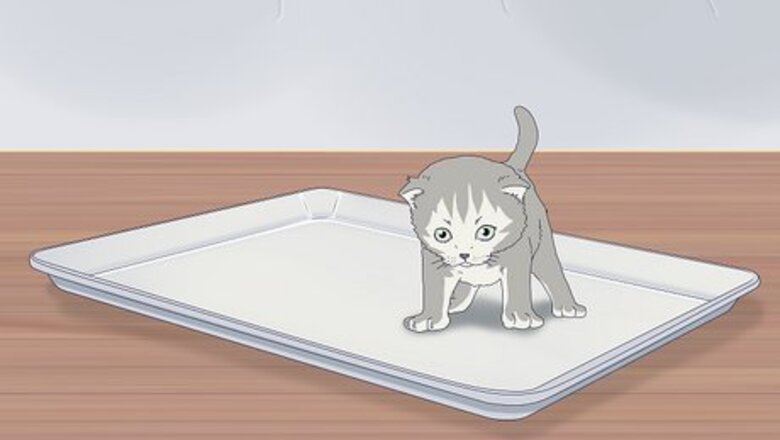
views
X
Research source
Since cats typically hate water, you might be feeling nervous about getting scratched, but we’re here to help you safely and easily bathe your kitty.
- Prevent scratches by wearing long-sleeves and trying to acclimate your kitten to water.
- Wet your kitten and massage a dime-sized amount of kitten shampoo, Dawn dish soap, or baby shampoo into their fur.
- Rinse the kitten thoroughly, and wrap them in a warm towel.
- Keep your kitten warm until they’re totally dry.
Acclimate your kitten to water if there’s time.
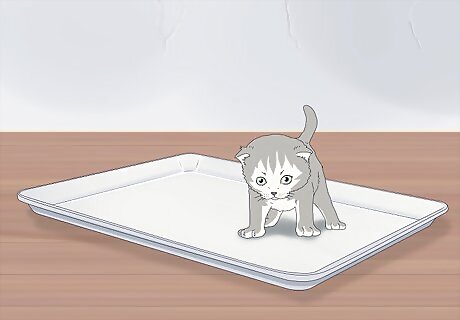
Teach your kitten to like water to make bathing easier. To get your kitten used to water, lay out a cookie sheet and place the kitten in it. Next, add some water to get your kitten’s feet wet. Once your cat is comfortable with wet feet, give your cat a toy to play with so they have fun in the water. If your kitten stays calm, they’re ready for a bath. Unless your kitten desperately needs a bath, take the time to acclimate them to water. It’s helpful to start before you need to bathe them. If your kitten gets upset, stop and move them away from the water. Calm them down, and then try again. If you start bathing your cat as a kitten, they should get used to taking baths. Use a damp cloth to wipe down your kitten if you can’t get it into a bath.
Ask someone to help you if possible.

You can totally bathe your cat yourself, but it’s easier if you have help. Kittens can be wily, and a calm kitty can suddenly start fighting. Having an extra pair of hands will make bathtime much easier. You could have your helper hand you things you need, like the shampoo. Alternatively, your helper might catch the kitten if they wriggle away from you.
Put on a long-sleeved shirt.

Protect your arms, because your kitten may scratch out of fear. Bath time is a new experience, and it’s natural for their claws to come out when they’re doing something for the first time. Long sleeves will help protect you from scratches. Your kitty isn’t trying to hurt you. At the same time, they may scratch you or try to climb up your arm out of instinct.
Gather your bath supplies.
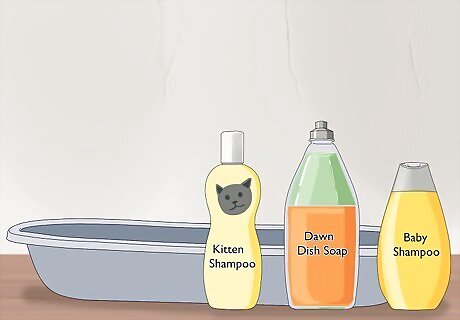
Make sure you have everything you need before you get started. Kittens are usually impatient during a bath, so you need to do it quickly. First, decide if you want to wash your cat in the sink, bathtub, or a plastic container. Then, grab some kitten shampoo, Dawn dish soap, or baby shampoo. Finally, collect a washcloth, two towels, a cup, and some treats. Since Dawn dish detergent can be drying, only use it if your cat is extremely muddy, greasy, or has fleas. Warm your towels in the dryer before giving your kitten a bath to help keep them warm.
Heat up the room.
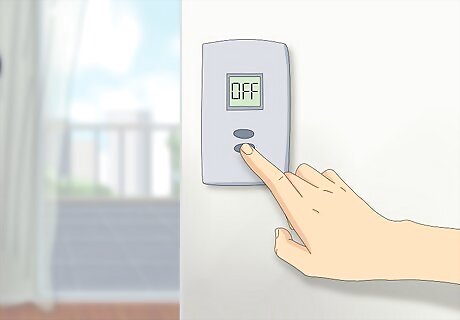
Get the room warm, because young kittens can’t regulate their body temperature. When they get wet, they could get very cold, so you have to be careful while bathing them. Warming up the room will keep your kitty comfortable. You might steam up the bathroom by running a hot shower, set out a space heater, or turn down the air conditioner. You can also use a heat pad to warm the kitten once it’s wrapped in a towel after the bath. Simply wrap the towel around your kitten, and then set it on the heating pad.
Scruff your kitten if you need to calm them down.
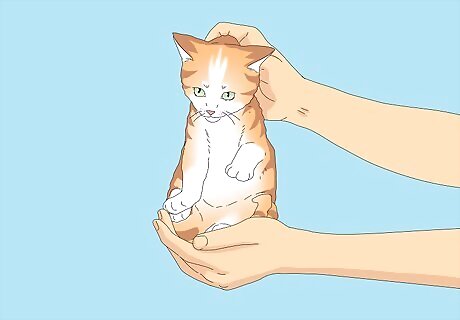
Gently hold the kitty by its scruff while cradling their bottom. The scruff is the loose skin on the back of the kitten's neck. They’re used to their mother carrying them around like this, so they'll naturally relax. Use both hands while handling your kitten so they can’t wriggle free. Make sure you’re cradling the bottom of your kitten the entire time. You don’t want the cat’s entire weight to be hanging from the scruff because your cat could feel some discomfort. Since scruffing only works on kittens, only do it while your cat is young.
Wipe the kitten’s face with a wet cloth.
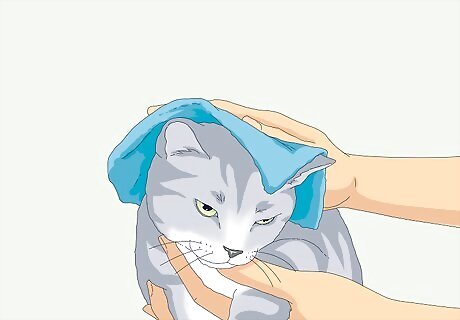
Never put your kitty’s face under flowing water because it’s scary. Instead, use a clean, wet rag to gently wash your kitten’s face and ears. Pay special attention to any areas that are dirty, such as around the mouth. Your kitten’s face probably won’t be very dirty. However, they may have food bits or dried milk around their mouth.
Hold your kitten under the faucet if you’re using a sink.
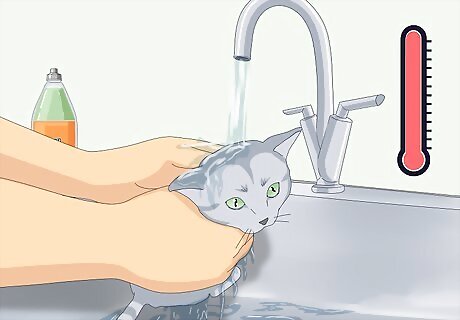
Wet your kitty's body with warm running water. Adjust your kitty under the stream so that you can thoroughly saturate their coat. Remember to keep your kitten's face out of the water. If your kitten is 4 weeks old or younger, you might rinse just the dirty area of the kitten. For instance, your kitty might just need a butt bath after toileting.
Place your kitten in an empty tub if you’re using a tub.
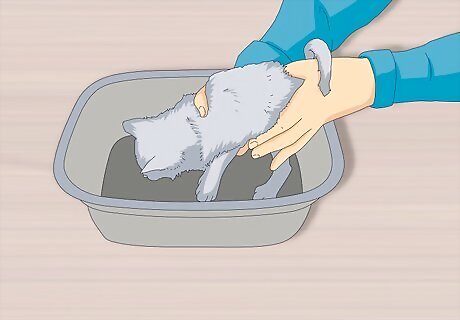
Wait to add the water so you can ease your kitten into the bath. Give it a moment to get used to the container before you get it wet. That way, your kitten won’t feel as nervous. If your cat tries to come back, gently place it back into the tub.
Add water up to the kitten’s knees.
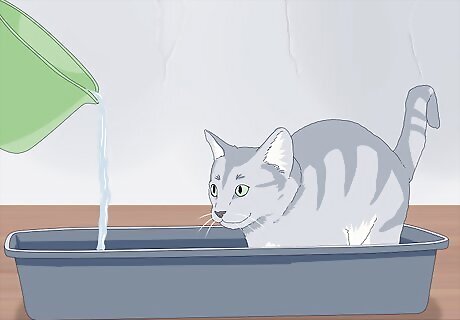
Fill the tub with a few inches of water to acclimate them. Your kitty might get scared if the tub has a lot of water in it. Use your cup or a pitcher to add just enough water to cover your kitten’s knees. You can always change out the water if it gets too dirty.
Pour warm water over your cat’s body.
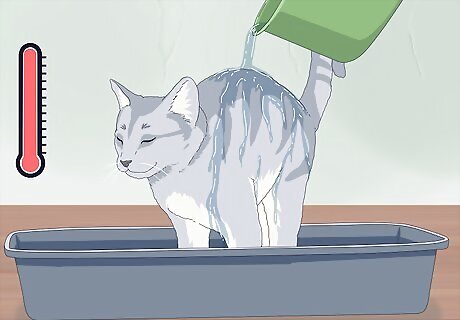
Use your cup to rinse off your kitten. Dip your cup into the water already in the tub, and then drizzle it over your kitty. Keep pouring cupfuls of warm water on your kitten until their coat is totally wet.
Apply a coin-sized dollop of kitten-safe shampoo.
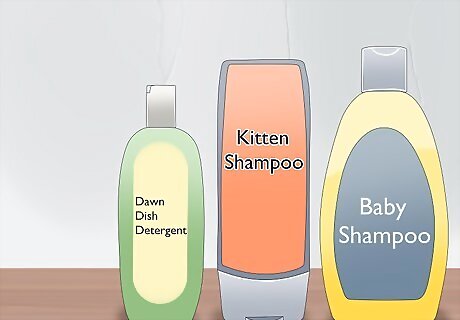
Use kitten shampoo, Dawn dish detergent, or baby shampoo. Squeeze the shampoo directly onto your kitten or onto your hand. Young kittens are typically too young for flea shampoo. Don’t use flea shampoo on a kitten until they reach the age listed on the label, even if they have fleas. If you have questions about shampoo, talk to your vet and follow their advice.
Massage the shampoo into the kitten’s fur.
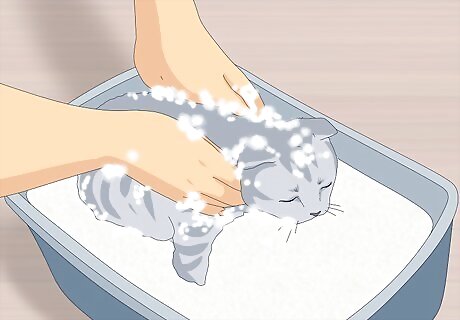
Lather the shampoo with one hand, holding the kitten with the other. Spread the shampoo over your kitten’s whole body, except for their head. Then, lift their tail and gently use a soft washcloth if you need to clean around the kitten's anus. If you have a helper, they can hold the kitten while you apply the shampoo.
Rinse the kitten with warm water.
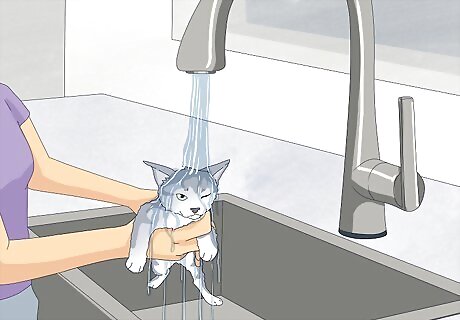
Hold your kitty under the faucet or use your cup to rinse them. Continue to rinse your kitten until all of the shampoo is out of its fur. Use your fingers to gently massage your kitten as you rinse to make it easier to wash away the shampoo. If you’re using a tub, the water is going to be sudsy. That’s okay as long as you don’t see suds on your kitty.
Stay calm during the bath.
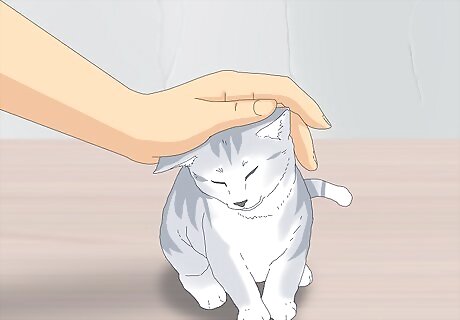
You and your kitty will have a better experience if you’re relaxed. It’s totally normal to get frustrated while bathing your kitten, especially if your kitten claws you. Try to remember that your kitty is just scared, and focus on calming them down. Pretty soon, you’ll both be enjoying cuddles again.
Wrap the kitten in a dry towel.

Rub the towel into your kitten’s fur to help them dry faster. Your kitty will likely be shivering because they’re cold, so keep them as snug as possible. If the towel gets too wet, switch to a clean, dry towel. If the kitten is 4 weeks old or younger, use a heating pad to keep it warm. Turn the heating pad on low, and then lay the kitten on the pad.
Use a flea comb to remove any fleas.
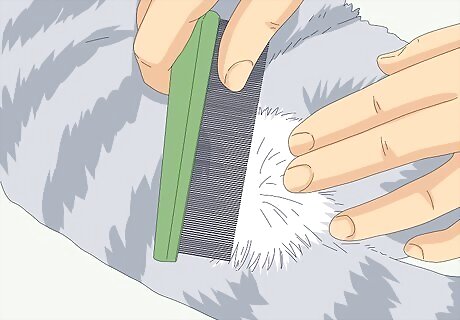
Manually remove fleas from your kitten if necessary. While your kitten is still wet and swaddled in the towel, gently pick the fleas out of its fur using a flea comb. Then, plunge the fleas into a cup of warm water mixed with a few drops of Dawn dish detergent. Dawn dish detergent prevents the fleas from escaping the water so that they drown. It’s not safe to use flea products on kittens that are younger than 8 weeks old. Make sure you also wash your kitten’s blankets and bedding to kill fleas.
Cuddle the kitten as it dries.
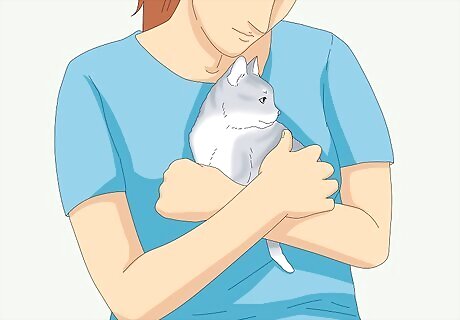
Stay with the kitten until it dries so you can help if they get too cold. You may need to give your kitten a new towel or turn the heating pad back on if you’re using one. While you’re waiting, praise and pet your kitten as a reward for getting through bathtime, which can be scary. If you have kitten treats, offer your fur baby a snack or two as a special reward. They’ll enjoy baths a lot more if they associate them with treats.
Warm the kitten with a hair dryer if they're shivering.
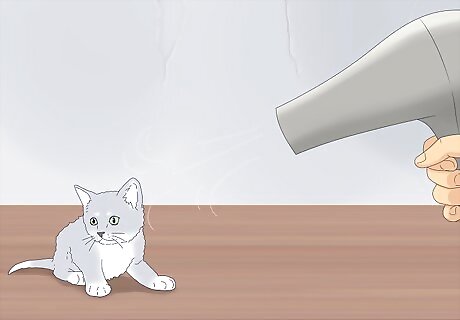
You might use a hair dryer if your home is very cold. Sometimes a hair dryer is the best way to make sure your cat doesn’t get too cold. If you decide to use one, set it on the lowest heat setting and move it back and forth as you dry your kitty. Make sure you don’t direct the hair dryer at one spot for more than a second or two because it could burn your kitty’s skin. Always use the lowest heat setting so your kitten doesn’t get too hot.

















Comments
0 comment